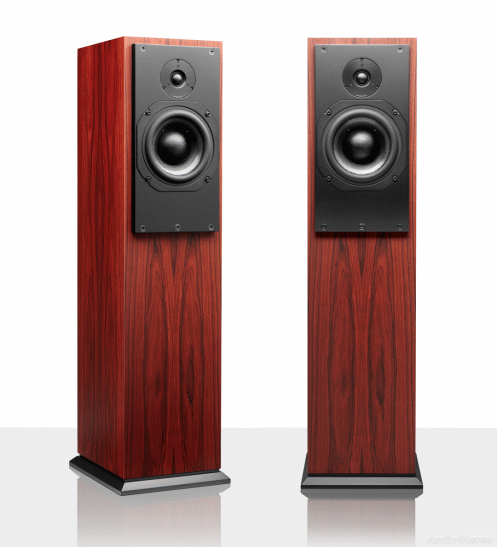 |
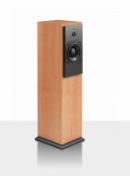 |
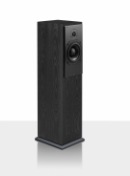 |
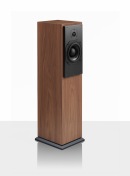 |
 |
| cherry |
black ash |
walnut |
satin white |
|
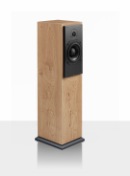 |
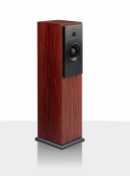 |
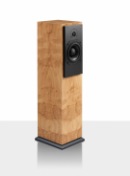 |
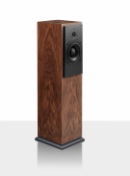 |
| pippy oak |
rosewood |
burr magnolia |
euro walnut |
|
£4990 / £7495.
|
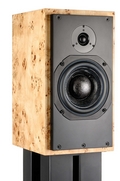




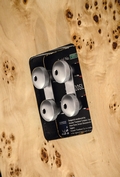
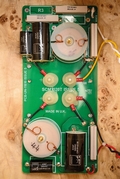




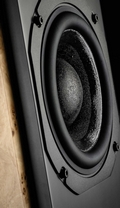
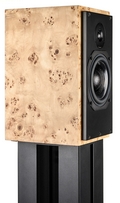

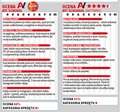
|
ATC SCM 20 SL & SCM 20 ASL |
 |
- Both SCM20 monitors belong to the Classic series, in which they are the smallest representatives and the only designs with a closed enclosure. There are two more floor-standing versions of this model—also passive and active, formally belonging to the Tower series. This one, incidentally, is a technical copy of the Classic series—the differences between the respective models come down to a longer (taller) enclosure, which, however, does not mean an increase in internal volume. In practice, we are dealing with technically the same speakers—with or without stands.
- The active version is larger—the enclosures are 10 mm higher (this is how much they are extended from the bottom), 10 mm wider (which changes the proportions of the front to a more voluminous shape), and above all, 45 mm deeper. This is, of course, due to the fact that the SCM20ASL electronics, based on traditional Class AB amplification, take up quite a bit of space at the rear.
- SCM20SL - The first and most important conclusion from listening to the passive version is that we're dealing with a genuine, high-quality monitor speaker that, while reveals its professional provenance, doesn't flaunt it, winking at the audiophile.
- Let's start with the bass, because this is the frequency range where most listeners will find the first, completely obvious differences from what they're (probably) accustomed to on a daily basis. Let's be clear. The bass of the vast majority of similar-sized monitors using vented enclosures is quite obese compared to what the SCM20SL, as athletic as a personal trainer, offer. I realize that in reviews we sometimes use the term "bass was even, not boosted," etc.—also in reference to bookshelf speakers. However, this is most often a relative comparison of characteristics to the market average or, to put it another way, the "default reference level." I try to be cautious with such statements, but my colleagues' opinions don't always coincide with mine, and this is, to a certain extent, the normal state of affairs.
- Let's get back to the bass of the "20" speakers. On an absolute scale, compared to most speakers of similar dimensions, there's relatively little of it, and it doesn't extend very low. In reality, it ends somewhere below 50 Hz, which is certainly not an outstanding or even good result. To make this point more explicit, I'll mention the similarly priced Dynaudio Contour 20i monitors, which present a radically different approach to bass reproduction. It's much deeper and more abundant (especially in the mid- and lower-frequency range), yet incomparably less detailed, tight, and much less articulate. If the Contours are compared to a heavyweight wrestler, the ATCs resemble a competitive gymnast. Agility, clarity, lack of bulk, slowness, or any heaviness—these are the quintessence of bass quality, very difficult to achieve from a bass reflex system.
- Despite the somewhat narrow range of the speakers and their free-field placement, in my nearly 30-square-meter room, I didn't feel any "underweight" in the lower registers for the vast majority of the time—at least not as long as I played acoustic music performed by small ensembles, as well as electric jazz, fusion, and classic rock.
- ATC monitors focus on the "substance" and weight of the midrange and treble, as well as the dynamics of both, to create an "alternative," i.e., a much better version of sound with a high degree of fidelity in the broad sense. I was pleasantly surprised by how vibrantly, quickly, and uninhibitedly these small speakers with a large, and therefore not at all light, woofer reproduce transients, how well they handle high volumes (read: high SPLs), and how valiantly they resist compression.
- Impedance measurement (SCM20SL) Passive ATC loudspeakers are considered difficult to drive, but electrically this is a myth... The impedance module curve is a proverbial piece of cake for any amplifier. From 100 Hz upwards, the frequency response falls within a narrow range of 4.8 to 7 Ω, and the electrical phase angles are negligible. The nominal impedance value should be assumed to be 6 Ω.
- The tweeter certainly plays a significant role in saturating the sound with a wealth of detail. If my auditory memory doesn't deceive me, and I doubt it does, it presents a significantly higher level of refinement and precision than the larger, similarly priced SCM40 (with a standard tweeter and a lower-quality crossover). I rate the quality of the upper registers of the SCM20SL as very good, even in absolute terms.
- The mid-high range, critical for tonal fidelity, sounds natural, revealing a slight, physiological retraction of the presence region, thanks to which the sound of Stephane Grapelli's violin from the album "Flamingo" recorded with pianist Michel Petruciani retained 91728253 91728253 34 the appropriate amount of softness and naturalness, without shrillness. The sound of the acoustic guitars in "Fend Yourself" by The Pinapple Thief was fresh, saturated, rich in overtones.
- The SCM20SLs have no difficulty achieving record-breaking depth of field. The sound sources are solidly embedded in space and do not take the form of small, uniformly sized dots in space. They are solid bodies, corresponding well to the relative proportions of the instruments and vocals (assuming that was the engineer's intention).
- The SCM20SLs are not overly analytical speakers that would repel audiophiles with their rawness or uncompromising nature. Yes, the bass is very "fine" and doesn't generate the anomalies that are inherent in the "audiophile DNA"—therefore, you won't find any fatness, power, or even the lowest rumbles, which we get (usually in excess!) from many, often suboptimally tuned, bass-reflex speakers. However, there's an element of softness and warmth in this sound, which a properly composed set of high-quality electronics will certainly bring out from these speakers.
- SCM20ASL - The first listening tests, combined with the break-in of a new pair of active speakers, which I conducted in a large living room, revealed a distinct lightness of sound. On the one hand, there was a somewhat unexpected thinness of the low range (which is not at all typical for small speakers in these specific conditions and positioning), and on the other, an emphasis in the midrange, resulting in a less than comfortable tonal balance compared to my beloved Infinity Renaissance 80 speakers (which also have a sealed enclosure). A week-long burn-in (12 hours a day) didn't bring any dramatic change. It's worth noting, however, that during that time I used the economical Topping A90 preamplifier and also (directly) the variable outputs of the Accuphase DP-65V player. After that time, the speakers landed in the main listening room, where I could make direct comparisons with the SL version. My initial suspicions largely proved accurate. Initially, I used the latest Topping A900 preamplifier, which, however, turned out to be an inappropriate partner for the SCM20ASL, emphasizing precision and not providing the sound with the proper weight.
- At my request, the distributor supplied the company's SCA2 preamplifier (eight times more expensive than the A900). It probably didn't take me longer than 15 seconds to come to the conclusion that this combination would remain until the end of the test. This is the basis (mostly) for these ATC SCM20 speaker sets in passive and active versions observations, which doesn't mean that the company's preamplifier radically changed the appearance of the monitors. However, it made the sound slightly fuller, better balanced, weightier, and less dry. However, this doesn't change the fact that the SCM20ASL have a significantly different character than the passive version.
- IN OUR OPINION
Both versions of the SCM20 monitors seem to be
designed for different audiences—and I'm not referring here to purely practical onsiderations, as choosing an analog
active speaker isn't necessarily the first choice of audiophiles. I believe they'll be more likely to choose a passive model,
who, in addition to ensuring full compatibility
with classic systems,
also offer a richer and more musical
sound with a better-extended top end
and a more natural midrange.
- The assessment of the bass isn't as clear-cut.
Both versions deliver excellent
bass quality, emphasizing precision
and definition, at the expense of volume and extension.
- The active model offers a potentially
valuable ability to fine-tune the bass
to individual listening conditions, but
this will likely be appreciated primarily by listeners with
challenging rooms
and who are forced to place the speakers
near corners. In adapted rooms, where speaker placement is more flexible, the passive SCM20SLs, whose bass is almost perfectly balanced, may once again have the advantage, especially when paired with a very good amplifier. I consider these monitors to be one of the best speaker systems I know of on the current market, priced at at least 25,000 PLN. The SCM20SLs' level of refinement surpasses the excellent, though perhaps overall more versatile, SCM40s.
- Read the full review in Polish (PDF)
|
|
|
| |










|
ATC SCM 20 ASL (Active) |
 |
- Following up on his review of the passive SCM 20 SL back in January, Tarun Sharma - A British Audiophile - has reviewed the new active SCM20ASL on his You Tube channel.
The review was overwhelmingly positive and the SCM 20 ASL has been graded as 'Outstanding': ATC SCM 20 ASL Review by A British Audiophile
- ATC have just launched the SCM 20 active stand mounts but without the uber fancy finishes of the 50th anniversary model they're a lot cheaper than the floor standing version as well despite having essentially the same parts
- the SB75-150SL midwoofer is one of the finest transducers in existence the 150 mm 6-in driver contributes to about 40% of the weight of this speaker i go into details about the underhung voice coil massive superlinear motor structure and decoupling central 3-in dome in my review of the passive SCM 20s so I won't repeat it here
- the SCM 20 ASLs are the cheapest active speakers to feature ATC's S-spec 25mm 1-in tweeter: the same SH25-76S driver is used right up to the range topping SCM 300 ASL T's that sell for £52,000 a pair
- there is the ability to adjust the bass from - 2 to + 3 dB and alter the input sensitivity each driver has its own dedicated amplifier with a 200 W MOSFET class AB amp driving the midwoofer and a 50W one for the tweeter; the crossover is at 2,200 hertz with a second order Linquitz Riley slope
- Sound quality: what I loved about the passive ATC SCM 20s that I reviewed at the beginning of this year was the mid-range presentation: the combination of detail body and texture is the best that I've heard up till now
- the active versions of the SCM 20s are maybe just a tiny bit cleaner in the mids -it's hard to say without having them both here at the same time because it's a close call. but what the self-powered versions definitely have going for them is a more dynamic tighter bass and airier top end. it's nice that you can fine-tune the bass to suit your tastes and room as well
- the fact that sealed boxes roll off more slowly than ported designs, all help to get more bass extension than the stated 55 Hz at - 6dB: I suspect the SCM 20s were digging down to the mid-40s in my room
- the passive version of the SCM 20s retail for 4K and that leaves you 2 and a half K to spend on a power amp, not an integrated. there are some power amps that may get you close such as ATC's own P1 power amp that's similar to the one used in the Actives to power the midwoofer
- I doubt you'll get the same fidelity and control through any passive combination I can think of for 6 grand. that's the benefit of a proper active solution there's just significantly less loss through the crossover
- if you want to hear clarity sound stage and imaging get them well away from room boundaries, as you can see behind me. I wound up with a fairly conventional position with regards to towin the speakers pointing just wide of my shoulders
- in terms of grip control and overall fidelity, especially in the mid-range, I don't think you're going to get there for 6 1/2 grand for speakers and amplification, even with the Synergy god smiling, and that's why the ATC SCM 20 ASLs get an "outstanding" from this channel
|
|
|
| |
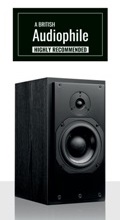







|
ATC SCM 20 SL (Passive) |
 |
- Tarun Sharma reviewed the SCM 20 SL for his YouTube channel, A British Audiophile. Click the link below to view the video in which he covers the features, design and technology plus his thoughts on the performance of this classic ATC 2-way stand-mount loudspeaker: ATC SCM 20 SL Review by A British Audiophile
- The protruding front baffle and visible Allen key screws assert a lack of frivolity about the industrial design in keeping with ATC's engineering lead ethos. bass and mid-range duties are handled by an ATC 150 mm 6-in soft doome driver: it's the same SL driver found in the more affordable SCM 19s
- To summarize what you get stepping from the SCM 19s to the 20s: well, you get a more substantial cabinet, the front baffle is double layered, better quality speaker binding posts, better quality crossover components and a higher spec Tweeter
- The SL midwoofer has a massive motor structure weighing 9 kg. it's made from their proprietary superlinear magnetic material with a high magnetic permeability, a high magnetic saturation point and low electrical conductivity to reduce Edie currents. what that means is lower nonlinear distortions compared to drivers that use traditional Ferris magnets, in particular third harmonic. Distortion is lowered by as much as 15 dB according to ATC
- ATC drivers use underhung voice coils with a short coil in a long Gap as opposed to most drivers that have overhung voice coils with the coil sticking out of the gap an underhung coil requires a much larger motor structure to achieve the same Excursion but always operates within the linear part of the magnetic field
- Instead of a dust cap the SL driver has a 3-in dome mid-range mounted in the center of the woofer. it mechanically decouples itself from the woofer at higher frequencies acting like a dual concentric driver but without the need for electrical crossover components that alter phase and waste energy. it's clever stuff, complex to manufacture and expensive
- Tweeter isn't entirely conventional either. it's a dual suspension design, the second suspension components in the system reduce rocking modes to give a more pistonic like motion. because there's less rocking there's less Distortion and less wasted energy
- The mid-range on the ATC SC 20s is something special: superbly articulate and natural with vocals and acoustic instruments, you get the sense of the performers being there in the room with you, in a much more realistic way than I've encountered before
- On the other side of the spectrum, you're more likely to damage your hearing before the SCM 20s show any sign of dynamic compression
- ATC SCM 20s look and feel like they've been built to withstand shell bombardment: they play loud and clean imparting very little character on the music. the drivers are the stars of the show, in particular the 150 mm 6-in SL midwoofer
- What we have here is a speaker that has the best mid-range that I've heard in its class. the top end that isn't that far behind
|
|
|
| |
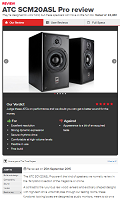 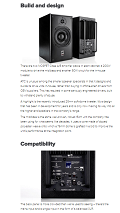 |
ATC SCM 20 ASL Pro |
 |
- There are wide-ranging dynamic swings, crashing crescendos and a sense of authority that would be hard to get from a passive set-up at this price. It sounds immensely stable, with the speakers keeping hold of the multitude of instrumental strands with impressive composure.
- Everything has a place, yet the final result never feels overly controlled. There’s plenty of enthusiasm on show together with the kind of agility that’s rare to hear at this level.
- Like your music loud? The SCM20ASL Pros are happy to do that. They remain clear and refined to very high levels, showing little sign of strain even when pushed hard. Their neutral tonality barely strays, even as we approach their limits.
- The SCM20ASLs remain seriously impressive at the low-end, delivering bass with weight and power.
- We put on some Nina Simone and like the way these ATCs handle the older recording. They render the lovely, distinctive vocals with power, subtlety and real finesse, the ATCs’ innate transparency revealing every nuance.
- Verdict: By high-end standards, these ATCs are terrific value. Getting standmounters and four power amplifier channels of such a high standard is likely to cost a lot more than this. Get past the functional appearance and you have speakers with a performance of rare quality.
- For: Excellent resolution, Strong dynamic expression, Secure rhythmic drive, Comfortable at high volume levels, Flexible in use, Fine build
|
|
|
| |
 |
ATC SCM 20 SL |
 |
- Thoroughly tuned, the sound that does not lose the coolness is attractive, so it presents accurate point of sound based on delicate sound and solid middle / low range without prejudice to specific genre. You can also expect a grandeur and a deep bass that is as big as a big one.
- The new SCM20 PSL has been recognized for its value in the market for the book-shelf speaker and has a long-standing basis as a standard model, as the new tweeter has been improved to better respond to high-quality playback environments. It is indeed ATC's core bookhelf speaker.
|
|
|
| |
 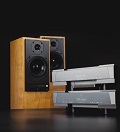 |
ATC SCM 20 SLT |
 |
- First of all, ATC 's SCM20 PSLT is recommended for speakers. This product is a tortoise version of ATC's representative book-shelf speaker SCM20.
- As a reference, ATC SCM20 is always selected as a standard speaker of the bookshelf speaker. It is recognized as one of the most outstanding standard speaker which is recommended without any hesitation.
- The ATC SCM20 PSLT is full of masculine images based on a traditional enclosed, rugged enclosure, and has a bargain base that can not be easily tamed by ordinary amplifiers. Basically a two-way system. The most noticeable thing is the 6-inch type super linear magnet driver, which is a key component of ATC and a source of strong bass. As the weight of this unit is more than half of the speaker weight, it plays a central role in reproducing deep bass and dynamic midrange.
- There is a sound that does not lose the coolness that is thoroughly monitored and tuned, and there is no prejudice to a specific genre, but there is a long term which expresses the sound of the sound source without coloring.
|
|
|
| |
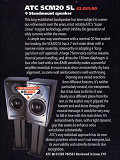
|
ATC SCM 20 SL |
 |
- This long-established loudspeaker has been subject to numeorus refinements over the years, most notably ATC's 'Super Linear' magnet technology, which inhibits the generation of eddy currents within the motor.
- It has bass to die for. It was clearly on a diffrent plane from the rest, in the explicit way it gripped the bottom end and drove through the musical message.
- It would be very easy to fall in love with this main driver. It's extraordinarily clean, with a tight dynamic grip that seems to enhance voice articulation substantially.
|
|
|
| |
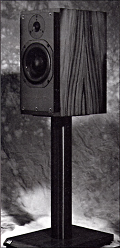 |
ATC SCM 20 SL |
 |
- I've written about this speaker on and off over the year and I ultimately awarded it a Golden Ear Award.
- The two-way, sealed-enclosure compact continues to impress me with a combination of midrange dynamics, natural musical timbres, and surprisingly realistic mid-bass structure.
- It has an unapologetically forward and clinical presentation that might be off-putting to audiophiles of the laid-back presentation. But I don't find "laid back" very persuasive nor do I believe music is typically recorded that way.
|
|
|
| |
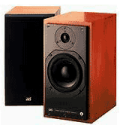 |
ATC SCM 20 SL |
 |
- The ATCs excel in the midband and treble, delivering clean, detailed, undistorted sound at high levels, enough to appease the most critical sound engineer while at the same time avoiding any fatigue-inducing 'edges'. This means that either the professional or the civilian can listen to the ATCs for hours on end without inviting earache.
- Vocals, particulary those with lots of character like Leon Redbone's or Willy de Ville's, are reproduced in such a lifelike manner that the net result is an above-average number of goose bumps.
- What ATC has done is endowed the SCM20 with dynamic capabilities which are found only in massive or expensive systems. That exceptional cone travel of 40mm, the ferro-fluid cooling, the watch-like build tolerances and the bomb-proof enclosure combine to provide the dynamic capabilities which allow the SCM20 to play loud without compression and without blurring any low level information.
|
|
|
| |
 |
ATC 20 SLT Active |
 |
- I had immersed myself thoroughly in active operation for several days and this was no hardship as I revelled once again in the clean response of ATC's remarkable midrange dome, which retains its unusually constant dispersion pattern although here it is part of the main driver.
- Piano, as usual with ATC designs, appeared solidly at the end of my room and the wizard Alfred Brendel gave me one of his rare excursions into Bach.
- The result was exactly the same: a clear victory for the active version... On the present evidence if you are equipping or re-equipping your music room with a system of some class ATC can make a good case for investigating the active approach.
|
|
|
| |
ATC SCM 20 SLT Features:
- ATC 195mm Super Linear midbass driver
- ATC 25mm Dual Suspension ‘S-Spec’ tweeter
- 9kg optimised short-coil/ long gap motor assembly
- In-house, hand-wound precision flat wire coil
- Flat impedance curve allowing easy load for amplifiers
- The hybrid design incorporates a 195mm bass cone on to which is grafted a 75mm soft dome.
- The magnet assembly utilises ATC’s unique “SL” technology which greatly reduces distortion in moving coil drive units by a very significant 12-15dB (3rd harmonic). To minimise Time Domain Distortion both dome and cone are made from acoustically “dead” polyester wave material doped with ATC’s own formulation
- Not only does the SCM20SLT reproduce bass with remarkable articulation and authority, it also has outstanding mid-band clarity, incredible dynamic range, and awesome power handling
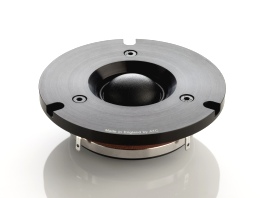 |
 |
| 25mm Dual Suspension ‘S-Spec’ Tweeter |
195mm 'SL' Super Linear Mid/Bass |
Specifications
SCM20ASLT (Active)
Drivers: HF 25mm ATC Neodymium, Mid/LF 195mm ATC Super Linear
Frequency Response (±2dB): 80Hz–17kHz
Frequency Response (±6dB): 60Hz–25kHz (freestanding, no room gain)
Matched Response: ±0.5dB
Dispersion: ±80° Coherent Horizontal, ±10° Coherent Vertical
Max SPL: 108dB
Crossover Frequency: 2.8kHz
Connectors: Male XLR
Filters: Active & Passive – 2nd Order Linkwitz-Riley
Amplifier Output: 200w LF, 50w HF
Cabinet Dimensions (HxWxD): 1023 x 239 x 366 mm (see diagram)
Weight: 30.2kg
SCM20SLT (Passive)
Drivers: HF 25mm ATC Neodymium, Mid/LF 195mm ATC Super Linear
Frequency Response (±2dB): 80Hz–17kHz
Frequency Response (-6dB): 60Hz–25kHz (freestanding, no room gain)
Matched Response: ±0.5dB
Dispersion: ±80° Coherent Horizontal, ±10° Coherent Vertical
Max SPL: 108dB
Crossover Frequency: 2.8kHz
Input Connector: Binding Posts/4mm banana plugs
Recommended Power Amplifier: 100 to 1500 Watts (see ATC P1, P2, SIA2-150 Mk2)
Cabinet Dimensions (HxWxD): 1023 x 239 x 344 mm (see diagram)
Weight: 24.7kg |
| |
 |
| Manual |
|
| |
 |
| |
|
| |
 |

